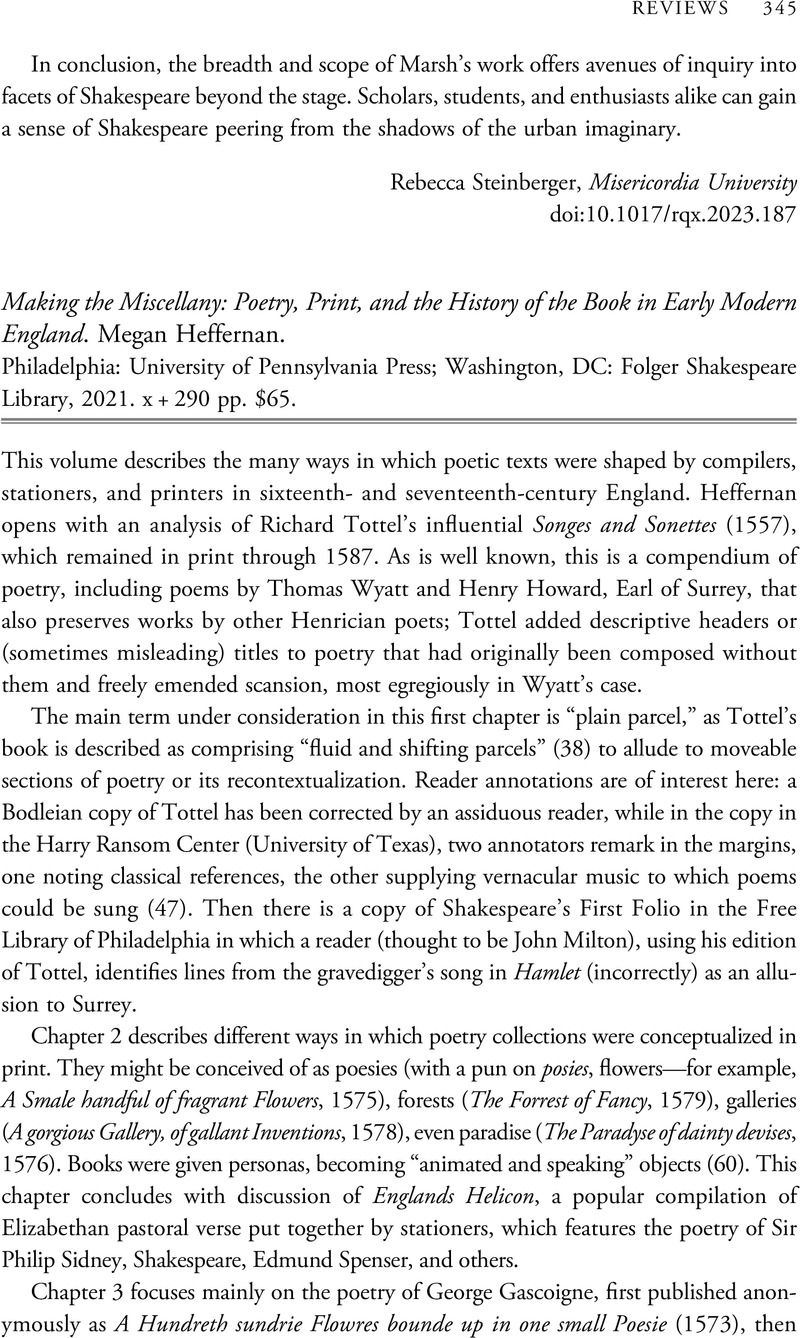No CrossRef data available.
Article contents
Making the Miscellany: Poetry, Print, and the History of the Book in Early Modern England. Megan Heffernan. Philadelphia: University of Pennsylvania Press; Washington, DC: Folger Shakespeare Library, 2021. x + 290 pp. $65.
Review products
Making the Miscellany: Poetry, Print, and the History of the Book in Early Modern England. Megan Heffernan. Philadelphia: University of Pennsylvania Press; Washington, DC: Folger Shakespeare Library, 2021. x + 290 pp. $65.
Published online by Cambridge University Press: 17 April 2023
Abstract
An abstract is not available for this content so a preview has been provided. Please use the Get access link above for information on how to access this content.

- Type
- Review
- Information
- Copyright
- Copyright © The Author(s), 2023. Published by the Renaissance Society of America



